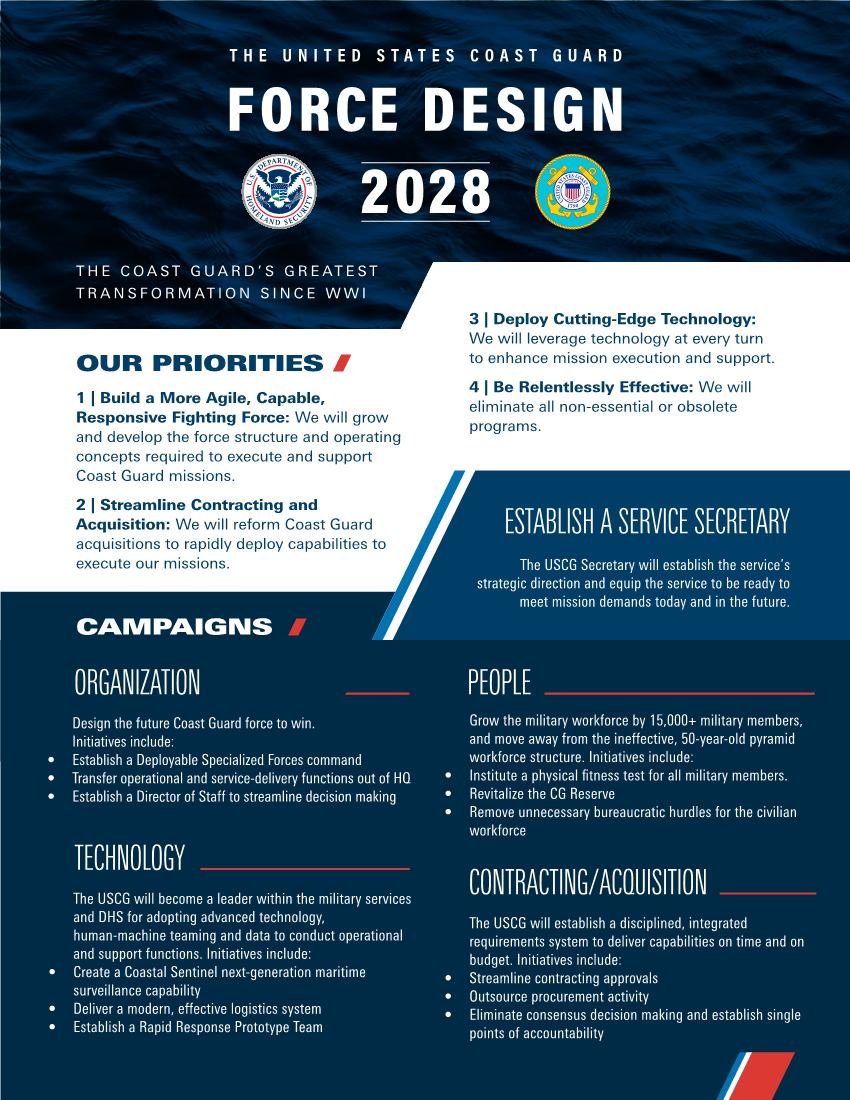 | USCG_FORCE DESIGN 2028_ONE-PAGER(508 COMPLIANT-05292025).PDF | USCG_FORCE DESIGN 2028_ONE-PAGER (508 COMPLIANT-05292025).PDF | 5/29/2025 | |
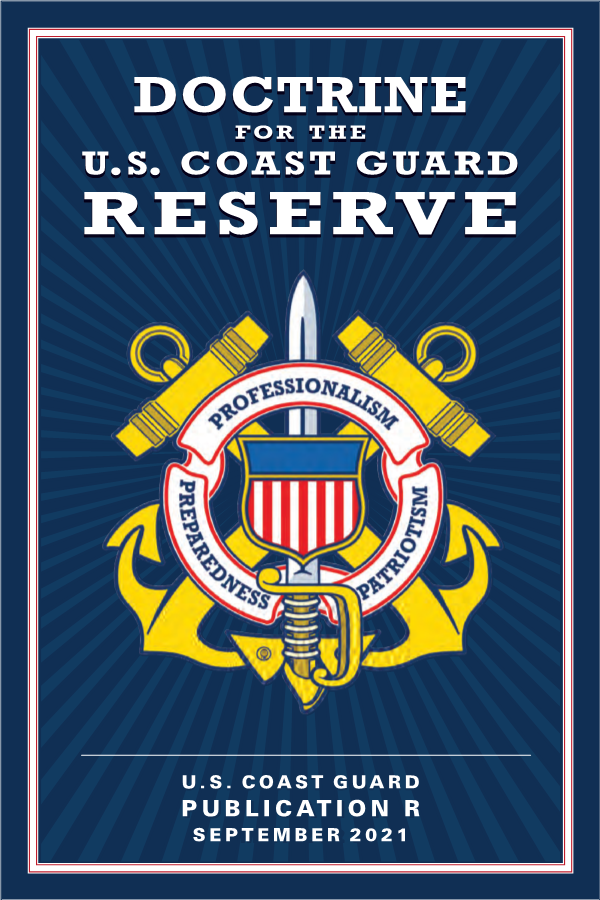 | USCG RESERVE DOCTRINE | Since 1941 when the Coast Guard Reserve was established to increase the military capability of the Service during World War II, the Reserve Component has evolved to augmenting daily operations and responding to foreign and domestic man-made and natural threats in the maritime environment. Publication R is doctrine for the Reserve; it is paramount to the continued success of the truly unique, integrated structure for the total Coast Guard workforce to read and understand the foundational and directional information presented in this document. | 10/6/2021 | |
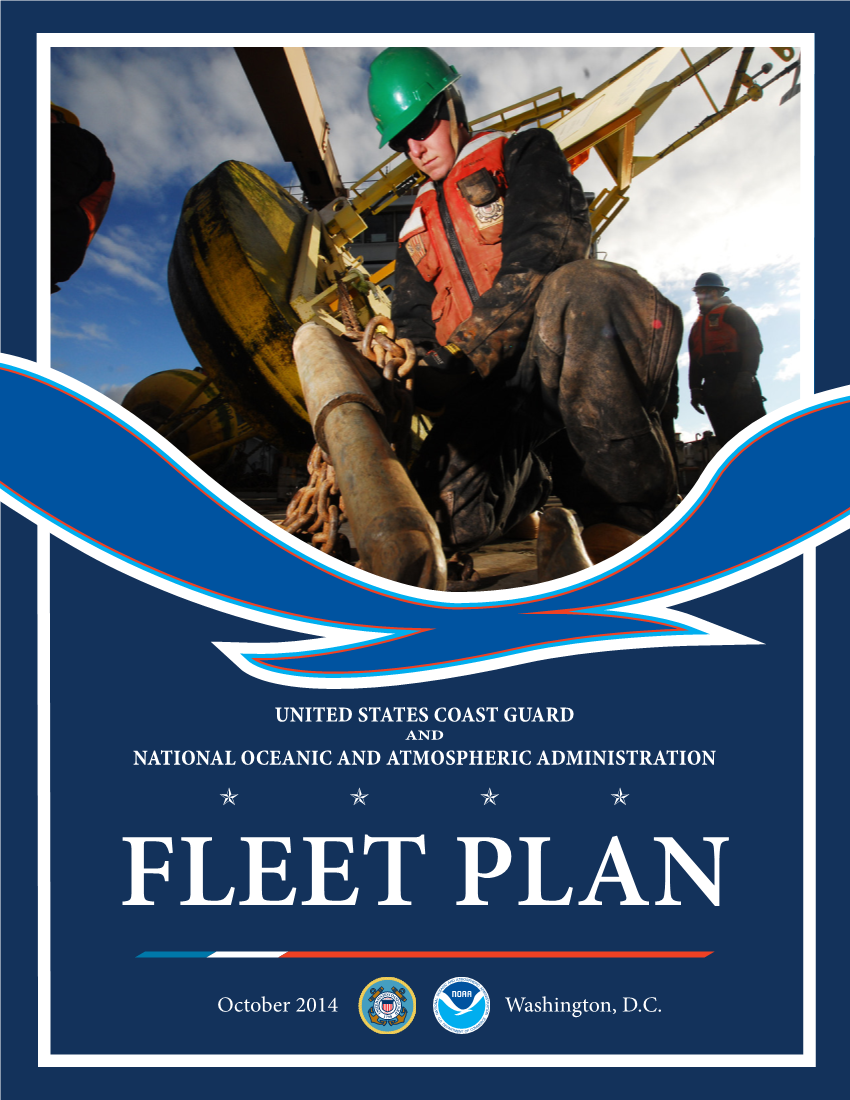 | U.S. Coast Guard and National Oceanic and Atmospheric Administration Fleet Plan | The USCG and NOAA share a legacy of collaboration stretching back to the beginning of our Nation. Over 207 years of mutual interests and intersecting missions have given rise to productive partnerships in the maritime and atmospheric domains. Common throughout these partnerships is reliance upon people and capital assets – uniformed service members and civilian personnel, ships, boats, aircraft, satellites, and autonomous and remotely piloted vehicles. These resources are employed to support our Nation’s economic welfare and sustain our natural resources. They also form the basis of, and contribute to, the United States’ ability to project soft sea power. | 10/31/2014 | |
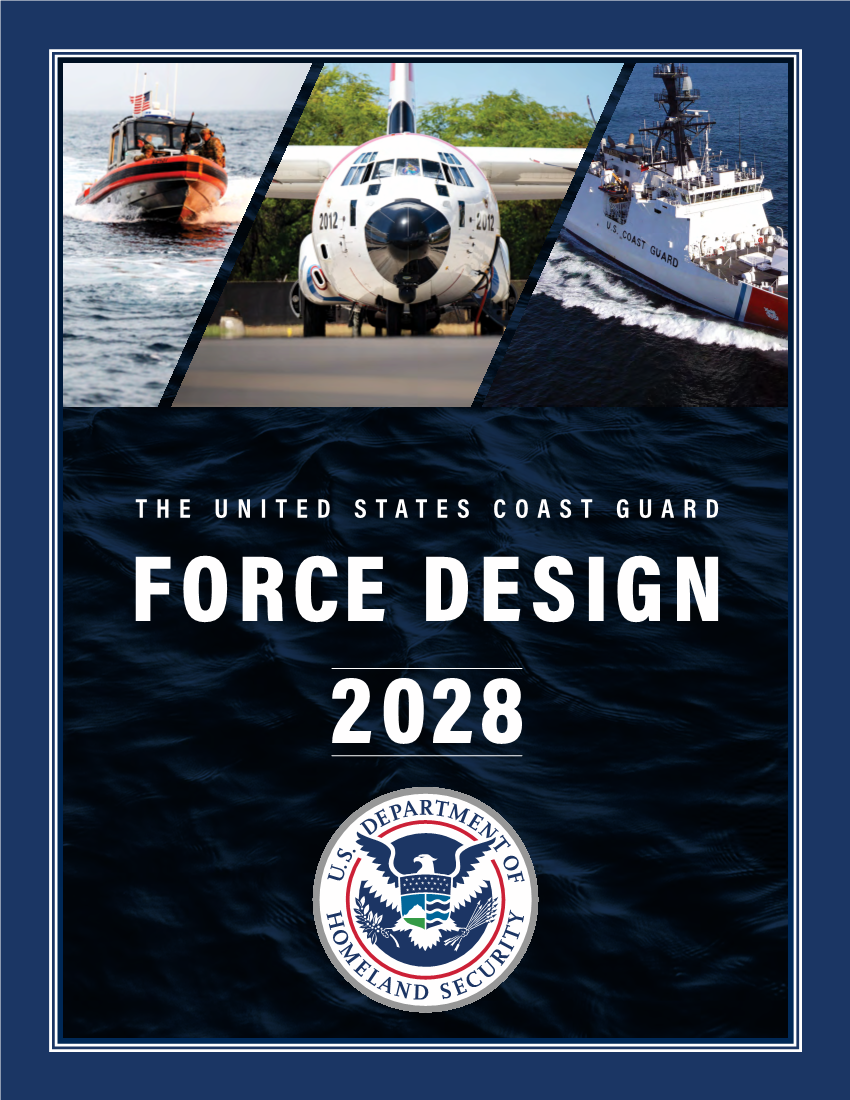 | REPORT - FD28 EXECUTIVE REPORT _1166_V14.PDF | Force Design 2028 Executive Summary | 5/27/2025 | |
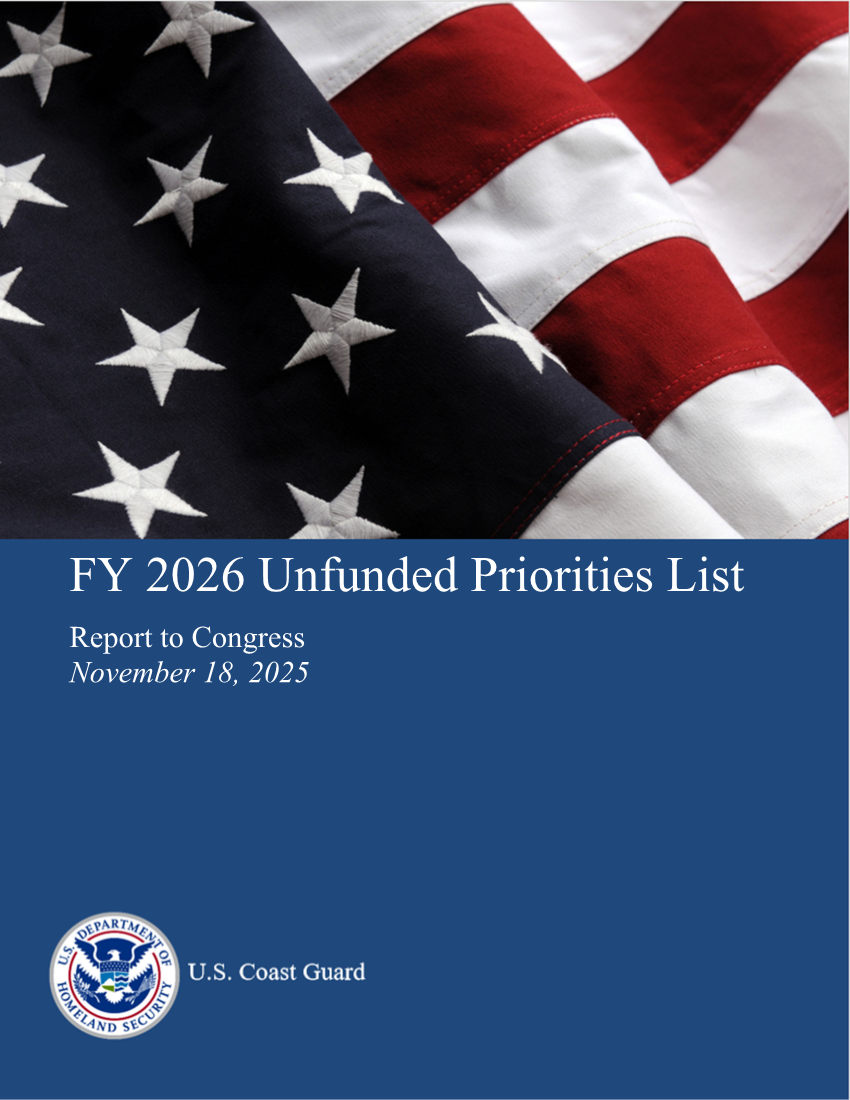 | FY 2026 Unfunded Priorities List | I am pleased to present the following report, “FY 2026 Unfunded Priorities List,” prepared by the U.S. Coast Guard.
Section 5108 of Title 14 and Section 3113 of Title 50, United States Code, directs the annual submission of a list of approved but unfunded Coast Guard priorities and the funds needed for each priority. | 11/18/2025 | |
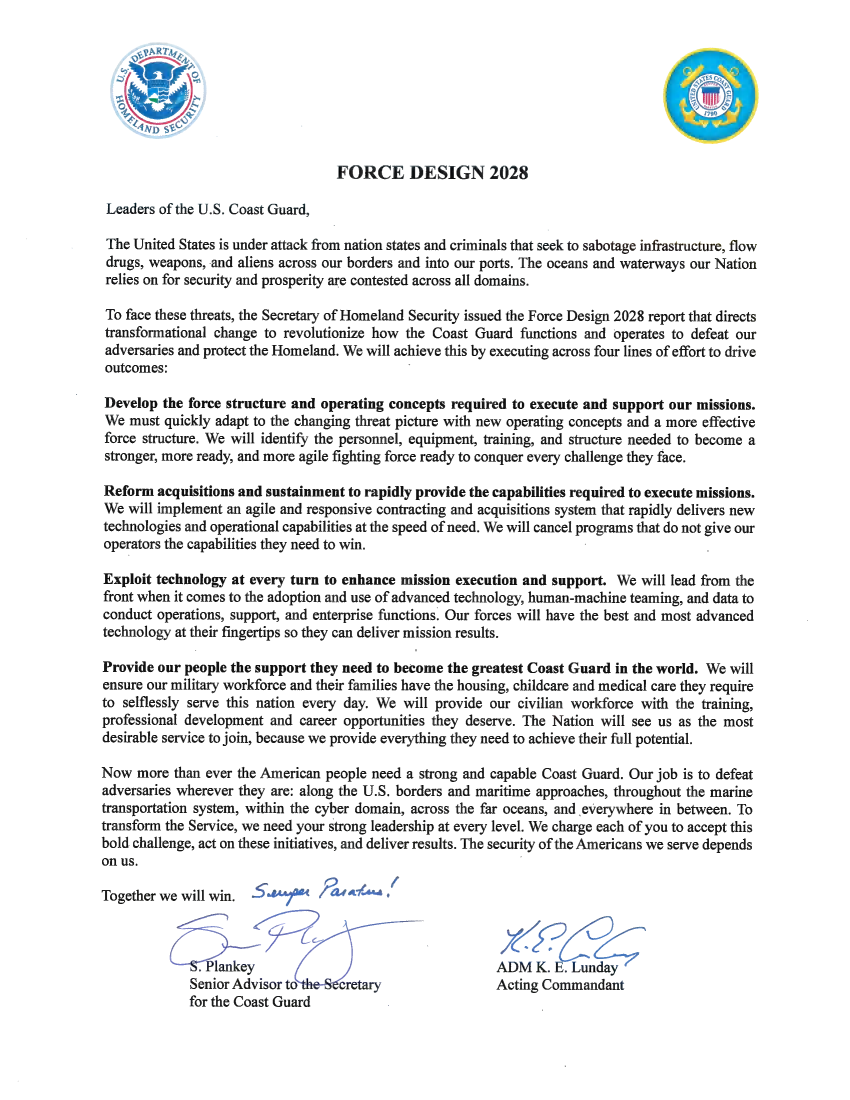 | FD28 - LETTER FROM SASCG AND CCG TO SENIOR LEADERS.PDF | Letter from SASCG and CCG to Senior Leaders | 5/23/2025 | |
 | Doctrine for the U.S. Coast Guard, Pub 1 | Our Coast Guard began in 1790 with a plan to govern the maritime commerce of our fledgling Nation. In that year, Congress authorized the construction of ten cutters to improve enforcement of customs duties and tonnage taxes. Since then our responsibilities have continuously expanded to encompass every aspect of maritime governance. Today, as the Nation’s maritime first responder, we fulfill our present day strategic mission of ensuring the Safety, Security and Stewardship of the Nation’s waters by protecting those on the sea, protecting the Nation against threats delivered by sea, and protecting the sea itself. | 2/28/2014 | |
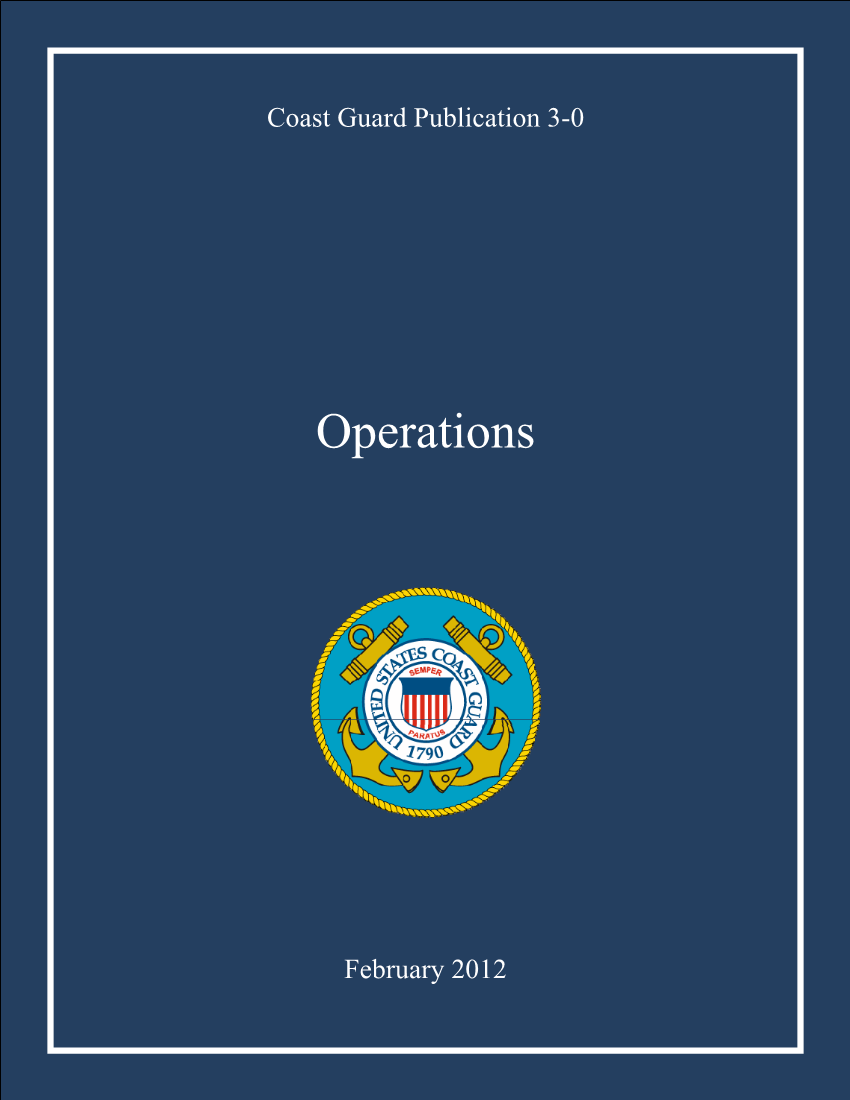 | Coast Guard Publication 3-0, Operations | Since 1790 the Coast Guard has conducted integrated, layered operations across vast geographic maritime areas of responsibility to meet the evolving threats and challenges that face the Nation.
The Coast Guard operates in the maritime domain, an enormous and complex environment. The physical characteristics of the sea present varying, dynamic and dangerous weather, seas states and water conditions. Human activity on the water continues to expand in a domain that does not readily sustain it. The maritime industry continues to evolve as the world remains fully dependent on global maritime trade in an advancing technology and information age. Varied and overlapping international and sovereign legal and policy regimes governing the maritime domain pose practical operational challenges. The Coast Guard requires a comprehensive concept of operations to successfully conduct operations in this unique operating environment. | 2/29/2012 | |
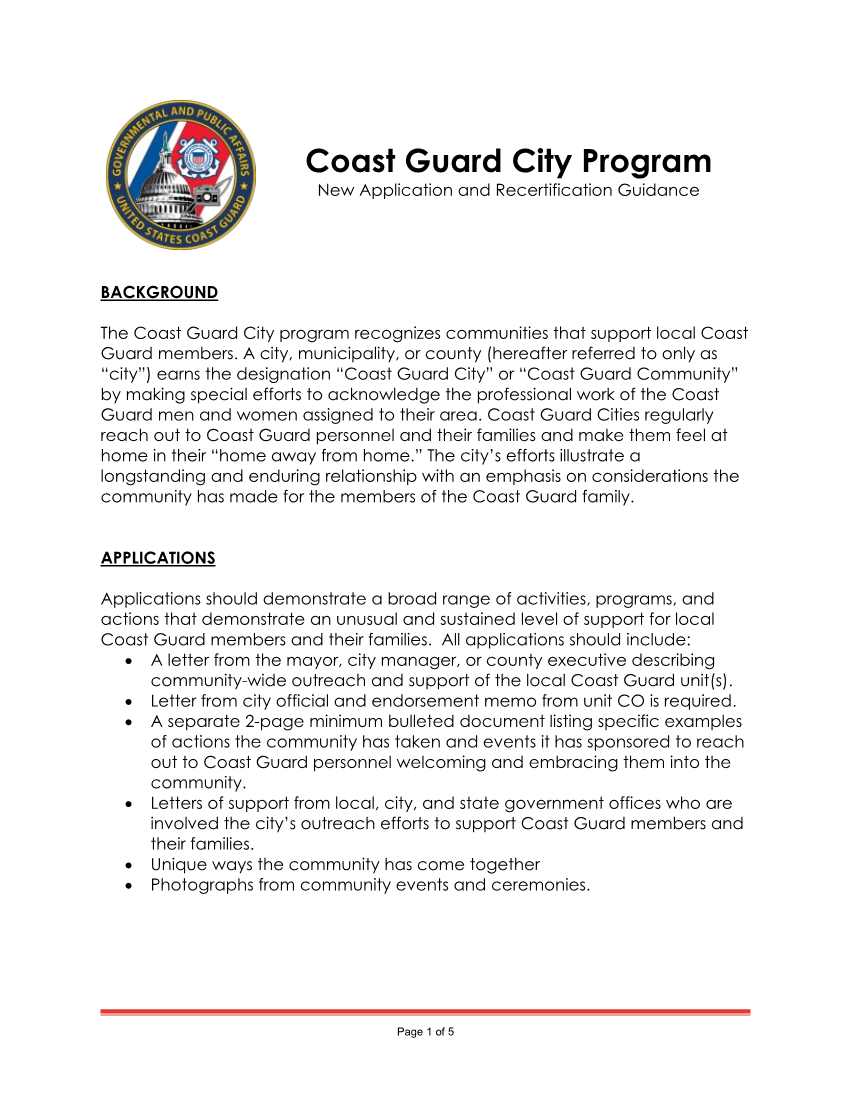 | CG CITY APPLICATION GUIDANCE_508 COMPLIANT 12182024.PDF | New Coast Guard Cities Application | | |
 | CG ACTION ORDER 1 INCREASING COAST GUARD OPERATIONAL PRESENCE 21 JANUARY 2025_508.PDF | Executive Order Clarifying the Military's Role in Protecting the Territorial
Integrity of the United States of 20 January 2025, Section 2
(b) Proclamation Declaring a National Emergency at the Southern Border of the
United States of 20 January 2025
(c) Executive Order Designating Cartels and Other Organizations as Foreign Terrorist
. Organizations and Specially Designated Global Terrorists of 20 January 2025
(d) Proclamation Guaranteeing the States Protection Against Invasion of 20 January
2025
(e) Executive Order Protecting the American People Against Invasion of 20 January
2025 •
(f) Executive Order Securing Our Borders of 20 January 2025 | | |